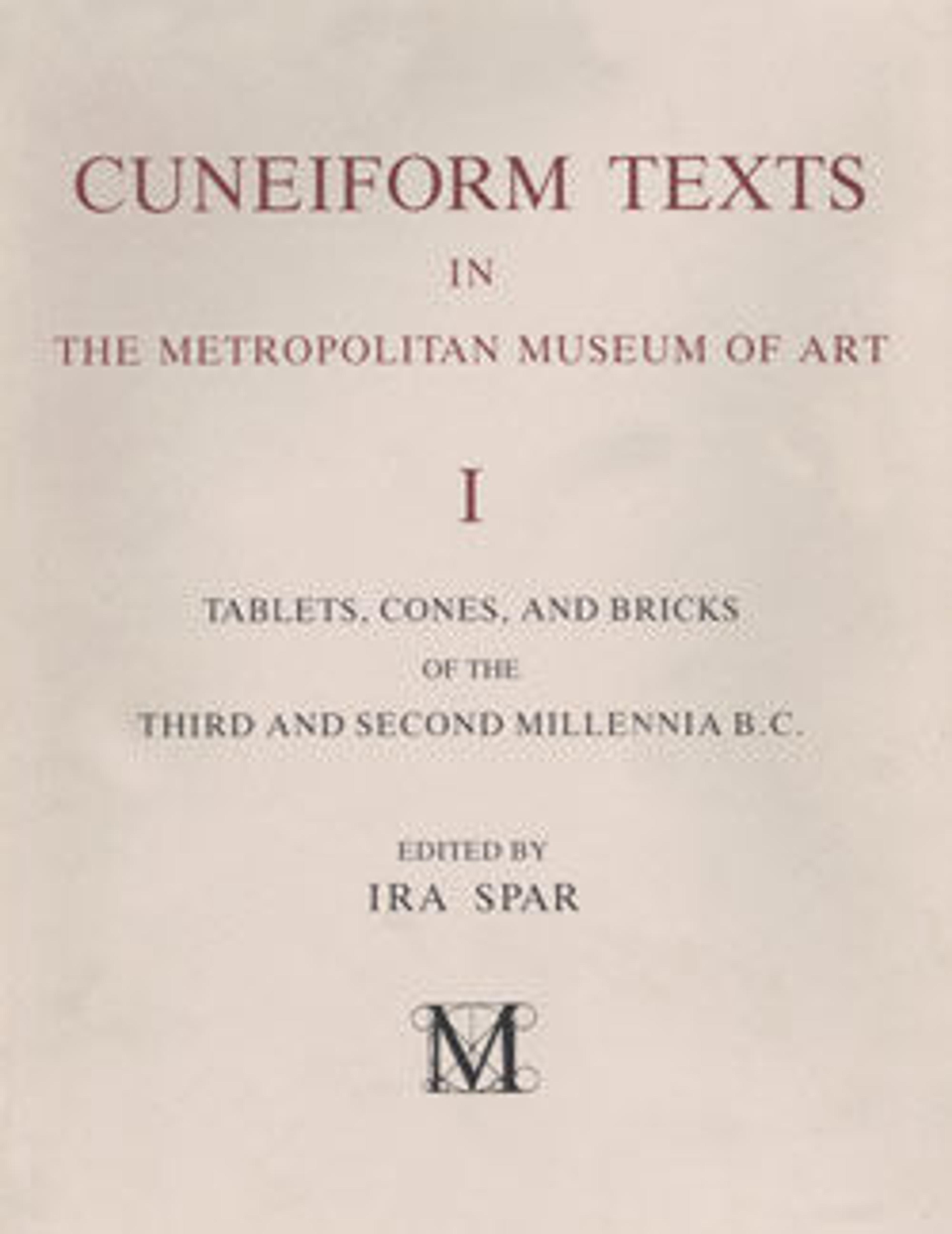Votive cone with cuneiform inscription of Lipit-Eshtar
Votive cones are one type of royal foundation deposit, objects that were buried in the walls and beneath the floors of important buildings during construction to sanctify the site and to create a historical memory of the ruler and his achievements. Hidden from view, these inscribed objects were meant to be found during later restorations. The shape of the votive cones are reminiscent of earlier foundation pegs (imagined to pin down the ground plan of a building), but provide additional space for an inscription with their cylinder-like thickness.
This clay cone was inscribed with a dedication of Lipit-Eshtar, who ruled the city of Isin in southern Mesopotamia ca. 1934-1924 B.C. The cuneiform inscription is written in Sumerian, which by Lipit-Eshtar’s day was a historic language – no longer spoken – that was mostly used for scholarly and religious texts. This cone was probably created for the construction of a temple (the E-ninisa, "House of Justice") at Namgarum, which, according to the inscription, was built after the king "established justice in Sumer and Akkad". Justice was a primary concern for kings in the Isin-Larsa and Old Babylonian Period, as known from the famous example of the Stele of Hammurabi, a monument depicting the ruler as the king of justice. This inscription, predating Hammurabi’s monument by a century and a half, shows the early emphasis placed on providing justice for the governed people. Elsewhere on this cone, Lipit-Eshtar refers to himself as a shepherd, plowman, and caretaker, metaphors of kingship that also convey the responsibility of kings to care for their subjects.
This clay cone was inscribed with a dedication of Lipit-Eshtar, who ruled the city of Isin in southern Mesopotamia ca. 1934-1924 B.C. The cuneiform inscription is written in Sumerian, which by Lipit-Eshtar’s day was a historic language – no longer spoken – that was mostly used for scholarly and religious texts. This cone was probably created for the construction of a temple (the E-ninisa, "House of Justice") at Namgarum, which, according to the inscription, was built after the king "established justice in Sumer and Akkad". Justice was a primary concern for kings in the Isin-Larsa and Old Babylonian Period, as known from the famous example of the Stele of Hammurabi, a monument depicting the ruler as the king of justice. This inscription, predating Hammurabi’s monument by a century and a half, shows the early emphasis placed on providing justice for the governed people. Elsewhere on this cone, Lipit-Eshtar refers to himself as a shepherd, plowman, and caretaker, metaphors of kingship that also convey the responsibility of kings to care for their subjects.
Artwork Details
- Title:Votive cone with cuneiform inscription of Lipit-Eshtar
- Period:Isin-Larsa
- Date:ca. 1934–1924 BCE
- Geography:Mesopotamia
- Culture:Isin-Larsa
- Medium:Clay
- Dimensions:Top: 16 cm (6 1/4 in.)
End: 7.8 cm (3 1/8 in.)
Total: 11.3 cm (4 1/2 in.) - Credit Line:Anonymous Gift, 1971
- Object Number:1971.71
- Curatorial Department: Ancient West Asian Art
More Artwork
Research Resources
The Met provides unparalleled resources for research and welcomes an international community of students and scholars. The Met's Open Access API is where creators and researchers can connect to the The Met collection. Open Access data and public domain images are available for unrestricted commercial and noncommercial use without permission or fee.
To request images under copyright and other restrictions, please use this Image Request form.
Feedback
We continue to research and examine historical and cultural context for objects in The Met collection. If you have comments or questions about this object record, please contact us using the form below. The Museum looks forward to receiving your comments.
